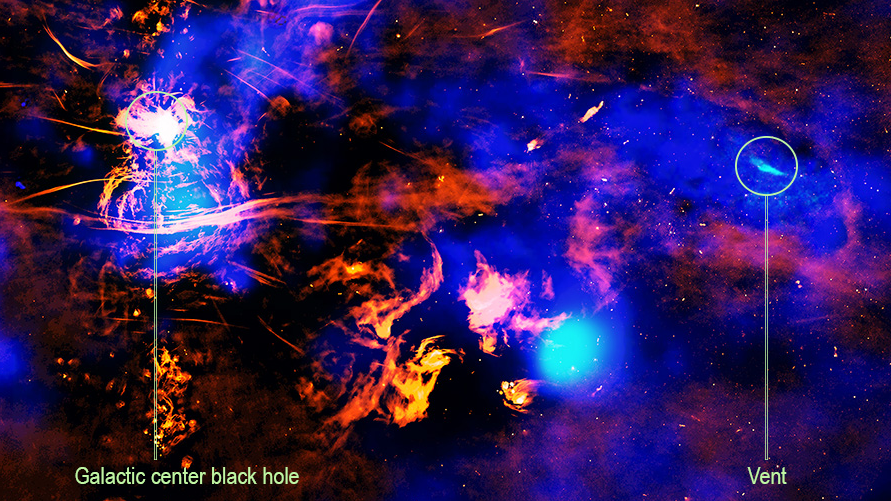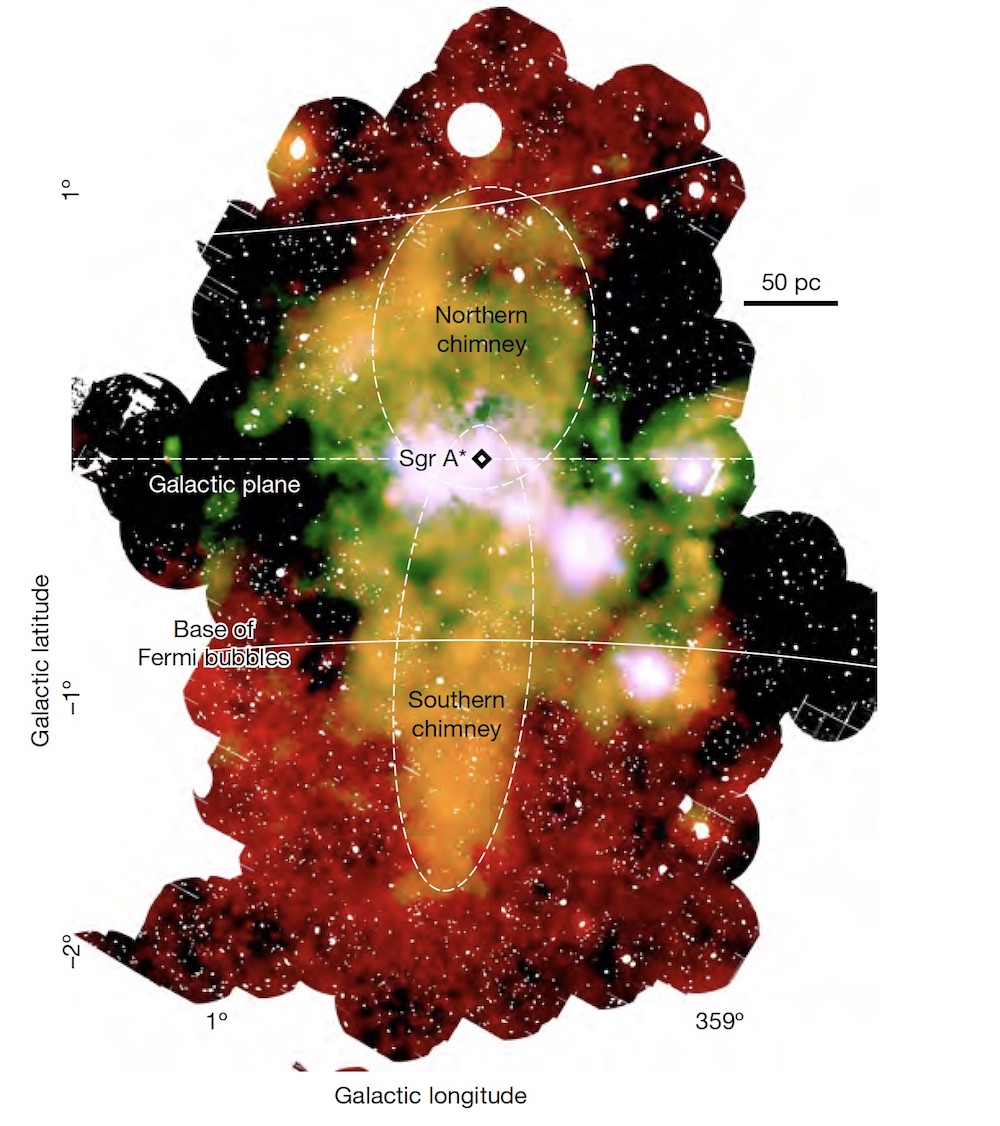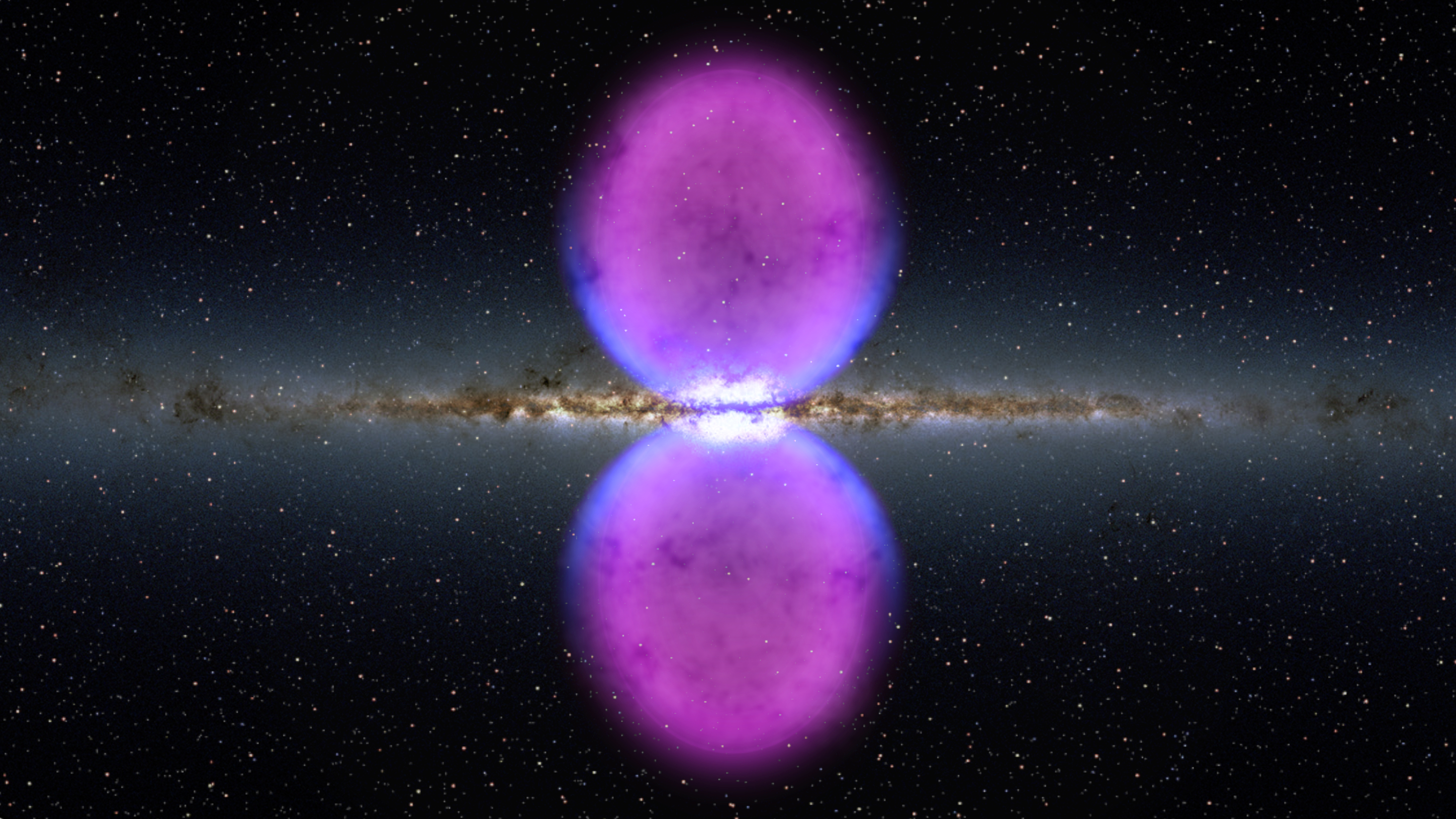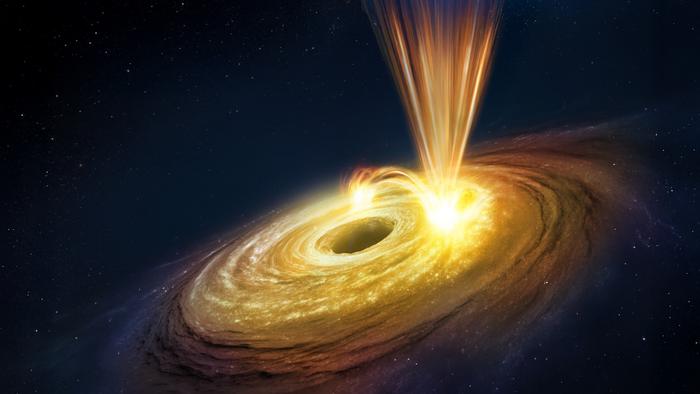Milky Way's black hole 'exhaust vent' discovered in eerie X-ray observations
A gargantuan "exhaust vent" may be channeling hot gas away from the Milky Way's supermassive black hole at millions of miles per hour — and filling up two enormous bubbles that tower over the galaxy.

The monster black hole at the center of our galaxy may be unleashing huge, gassy explosions — and now, astronomers think they've pinpointed the exact spot where that superheated gas is spilling into the Milky Way.
Acting like a gargantuan exhaust vent, the newly discovered feature is a bright region of X-ray energy that's nearly 700 light-years from the galaxy's supermassive black hole but linked to it by a long "chimney" of superhot gas.
According to new research accepted for publication in The Astrophysical Journal, this spray of X-rays results from hot, black-hole-driven gas traveling up the chimney and colliding with cooler gas in the surrounding environment at more than 2 million mph (3.2 million km/h), sending enormous shock waves rippling through the galaxy.
The discovery could unlock secrets about the supermassive black hole's eating habits — and help reveal the true nature of some of the most mysterious objects lurking in the galactic center.
"Astrophysicists have long been interested in the movement of material and energy from the Milky Way's center and its black hole, both to understand what's happening in our cosmic backyard and how galaxies form and evolve," lead study author Scott Mackey, an astrophysicist at the University of Chicago, said in a statement. "We're really excited to find this new piece of the puzzle."
Black hole belches
The Milky Way's supermassive black hole, Sagittarius A* (Sgr A*), is roughly 4 million times more massive than the sun. It sits at the dense, chaotic center of our galaxy, steadily gobbling up hapless stars, gas clouds and other matter that gets too close to its event horizon — the point beyond which nothing, not even light, can escape.
But infalling matter doesn't always make it into our black hole's maw. Sometimes, matter gets channeled by powerful magnetic fields into jets that spew away from the black hole at high speeds. In 2019, astronomers spotted evidence of our black hole's messy eating habits when they detected two huge chimneys — one towering above Sgr A* and one descending below — siphoning hot gas away from the galactic center for hundreds of light-years in each direction.
Get the world’s most fascinating discoveries delivered straight to your inbox.
Related: 'Immortal' stars at the Milky Way's center may have found an endless energy source, study suggests
This discovery prompted the authors of the new study to investigate the region further. To do so, they used data from NASA's Chandra X-Ray Observatory, which is designed to detect extremely hot gases.
"We suspected that magnetic fields are acting as the walls of the chimney and that hot gas is traveling up through them, like smoke," Mackey said. "Now we've discovered an exhaust vent near the top of the chimney."
The Chandra observations showed that, near the top of the black hole's lower chimney, this vast vent of bright X-rays exists where hot and cool gas perpetually collide. It's unclear how often Sgr A* is spitting out gas to fill up this area, but prior X-ray studies of the region have found evidence of large eruptions occurring every 100 years or so.
If that's the case, this black hole vent-and-chimney system may be the source of some of the most mysterious objects in our galaxy — the gargantuan Fermi bubbles and eROSITA bubbles, which overlap each other while straddling the galaxy's center like a giant, invisible hourglass. Filled with high-energy gamma-rays and X-rays, these mysterious bubbles stretch roughly 25,000 light-years above and below our galaxy's central black hole — spanning about half the width of the Milky Way when measured together.
Astronomers aren't sure where these bubbles came from, but they have long suspected that powerful energy outbursts from Sgr A* may be to blame. The newly discovered black hole vent adds further fuel to this theory, drawing a relatively straight line from the black hole to the base of the bubbles, with a steady river of hot gas in between.
"The chimneys could thereby be the channels by which sources in the Galactic center have provided the energy and particles to feed the Fermi and eRosita bubbles," the authors wrote in their study.
The team said the biggest remaining question is whether the bubbles were filled in a single, enormous black hole outburst long ago or by a series of smaller blasts that occurred regularly over millions of years. Further study of both the galactic center and the hungry monster that lurks there could help solve this cosmic mystery.

Brandon is the space / physics editor at Live Science. With more than 20 years of editorial experience, his writing has appeared in The Washington Post, Reader's Digest, CBS.com, the Richard Dawkins Foundation website and other outlets. He holds a bachelor's degree in creative writing from the University of Arizona, with minors in journalism and media arts. His interests include black holes, asteroids and comets, and the search for extraterrestrial life.




